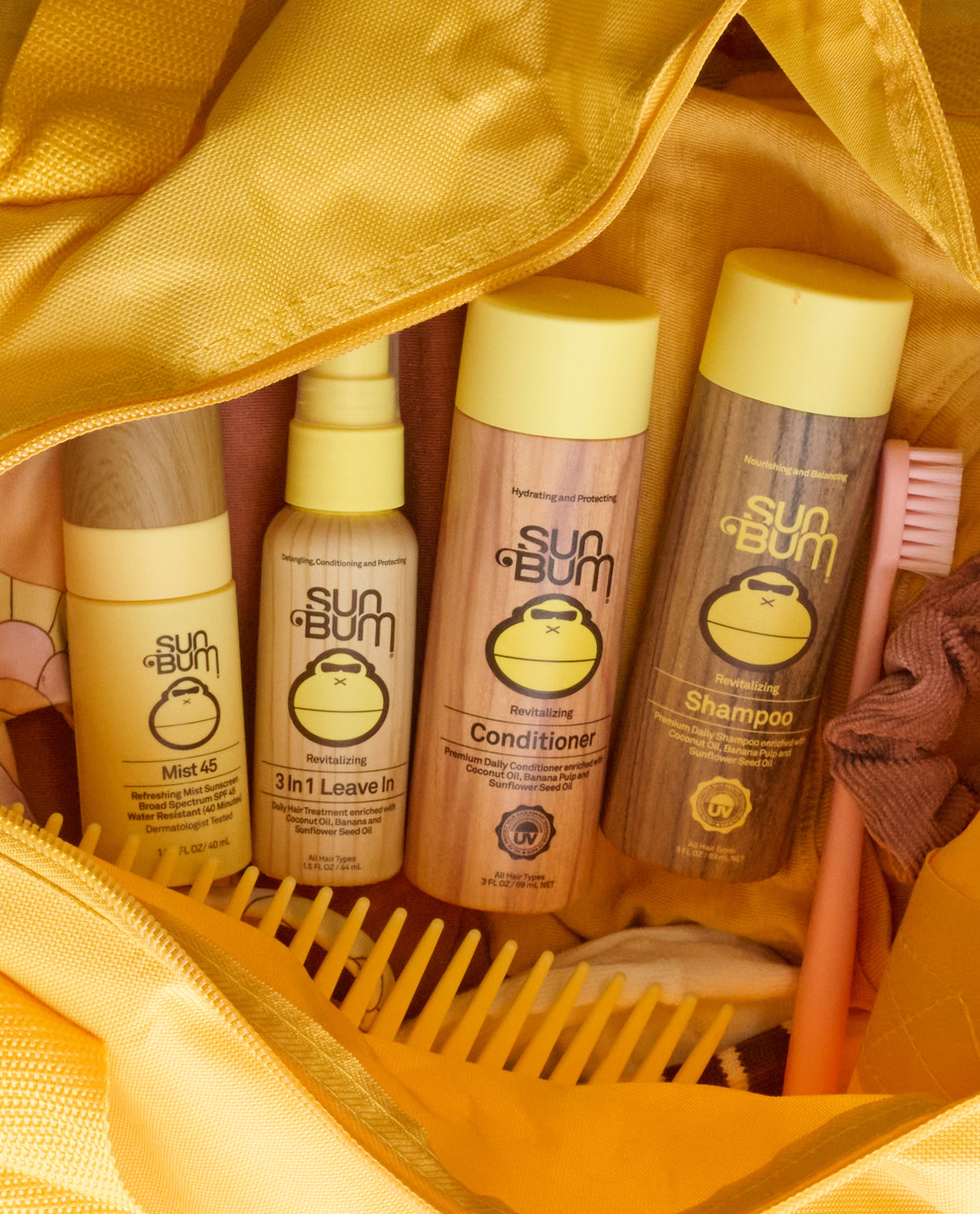Can You Tan With Sunscreen?
Can You Tan With Sunscreen?
You want to enjoy the great outdoors and get a little “color” in the process, but you still apply your favorite bottle of SPF 30 lotion because you don’t want to end up looking like Magda in There’s Something About Mary. Will this layer of sun protection prevent tanning? In short, yes and no. Read on to understand exactly how sunscreen works and the fine line between achieving a light bronze versus an unhealthy burn.
How Does Sunscreen Work?
So, how does sunscreen work anyway? Sunscreens fall into two camps, primarily based on their core active ingredients:
- Mineral sunscreens, which protect the skin’s surface by reflecting the sun’s rays.
- Non-Mineral sunscreens, which protect the skin by absorbing the sun’s harmful rays.
In some cases, sunscreens combine both types of active ingredients (mineral and non-mineral) to help receive the benefits of both.
Mineral Sunscreens
If you’ve purchased a mineral sunscreen in the United States, it likely contains either Titanium Dioxide and/or Zinc Oxide. Both TiO2 and ZnO are white powders that can be synthetically altered. These ingredients can also be coated or uncoated, which aids in formulation. Titanium Dioxide protects against UVB rays while Zinc Oxide provides protection against both UVA and UVB (read more about UVA vs. UVB rays). Zinc Oxide is not the only FDA-approved ingredient that provides broad spectrum protection, but it is generally regarded as the most effective.
Non-Mineral Sunscreens
Non-mineral active ingredients are designed to “filter” or protect against UV radiation. A few of the most commonly used active ingredients in non-mineral sunscreens include:
- Avobenzone (effective in absorbing the sun’s UVA rays)
- Octisalate, Octocrylene and Homosalate (protect against UVB rays)
Do Sunscreens Prevent Tanning?
For all intents and purposes, an effective, broad-spectrum sunscreen will minimize tanning, but it doesn’t give you 100% protection from the sun’s UVA and UVB rays. That means that over extended periods of time outdoors, your skin (depending on skin type) will most likely tan even with properly applied sunscreen. However, frequently applied, broad-spectrum sunscreen to all exposed areas will reduce the harmful effects of the sun on your skin.
How Does Tanning Work?
Tanning is the result of your skin receiving too much UVA radiation exposure from the sun or tanning beds and — to protect itself from damage — it produces more melanin cells. To reduce your risk of skin cancer, you’ll want to avoid the tanning beds altogether (super ’80s anyway) and be sure you’re wearing SPF and sun protection every time you’re in the sun. To be clear: there is no such thing as a “healthy” tan.
Does a Lower SPF Increase My Chances of Tanning?
A quick refresher on SPF: the SPF rating on your sunscreen only measures how much it protects you from UVB rays — the type of UV responsible for sunburn, blisters, peeling, etc. Tanning is the long-term result of your skin protecting itself from too much exposure to UVA rays — thus triggering your body to produce more melanin. To truly minimize the tanning effect while you’re outdoors, make sure you apply a “broad spectrum” sunscreen with an SPF 30 or more, providing protection from both UVA and UVB rays.
How to Prevent Tanning
While there’s no such thing as a healthy tan, there are ways to enjoy extended time outdoors while protecting your skin. Here are some ways to keep the fun at a maximum and the Magda-look to a minimum:
- Use a broad-spectrum SPF 30 or higher sunscreen.
- Apply sunscreen 30 minutes before sun exposure and re-apply every two hours and even more often if you’re in and out of the water.
- Avoid prime time. Limit your exposure during peak UV hours — typically between the hours of 10 am and 4 pm.
- Ditch the tanning bed. It’s not a good look — ever.
- Protect the “extremities.” Apply a high-SPF lip balm, wear a wide-brimmed hat and use sunglasses to shield your face, lips, eyes, and other sensitive spots.
Can Sunscreen Inhibit Vitamin D Intake?
The UVB rays we try to avoid also aid in the production of Vitamin D. This is the vitamin the body uses to regulate phosphate and calcium levels to keep bones, teeth and muscles healthy. However, the body does not need very much of it. Exposure to the sun’s rays for just 30 minutes a week gives the body enough time to make all the Vitamin D it needs — even if you don’t drink milk. According to the National Institutes of Health, you should try to get 5–30 minutes of unprotected sun exposure to your face, arms, legs, or back 2–3 times a week between 10 AM and 3 PM.
FAQs About Tanning With Sunscreen
Is SPF 30 Enough to Prevent Tanning?
Since no sunscreen gives you 100% protection from the sun’s UVA and UVB rays, even a minimal amount of sun exposure can result in some tanning – especially over an extended period of time. However, the SPF rating only rates a sunscreen’s effectiveness on UVB rays. Tanning is the result from excessive exposure to UVA rays — which is when your skin produces more melanin cells to protect itself. Because of this, a broad-spectrum SPF 30 and above is the best way to keep tanning to a minimum.
How Do You Tan Better With Sunscreen?
There is no such thing as “tanning better” since tanning is a result of too much exposure to the sun’s UVA rays. To keep tanning at a minimum while still enjoying the outdoors, wear broad-spectrum sunscreen 30 SPF or higher, a wide-brim hat, sunglasses and sleeves. Also limit your direct sun exposure during the peak UV hours from 10 am to 4 pm.
Is SPF 30 or 50 Better for Tanning?
Your sunscreen SPF rating measures how well you’re protected from the sun’s UVB rays — the type of radiation that gives you sunburn. Tanning occurs from excessive exposure to UVA rays. So, while leveling up from a SPF 30 to SPF 50 sunscreen will increase your protection from 97% coverage to 98% coverage, it’s more important to use a broad-spectrum sunscreen to regulate exposure to tan-inducing UVA rays.




















